Checkpoint immunotherapy, especially against the PD-1 checkpoint pathway, has proven effective in several cancer types, but unfortunately the majority of patients still don’t respond to this immune-based approach. Therefore, during Day 2 of ASCO18, many of the talks and poster discussions dealt with strategies overcoming this resistance to immunotherapy through combinations as well as a few novel agents that may hold synergistic potential with existing approaches.
In renal cell carcinoma (RCC), the most common form of kidney cancer, Laurence Albiges, MD, PhD, of Gustave Roussy and the University of Paris-Saclay, discussed two posters describing studies using immunotherapy combinations.
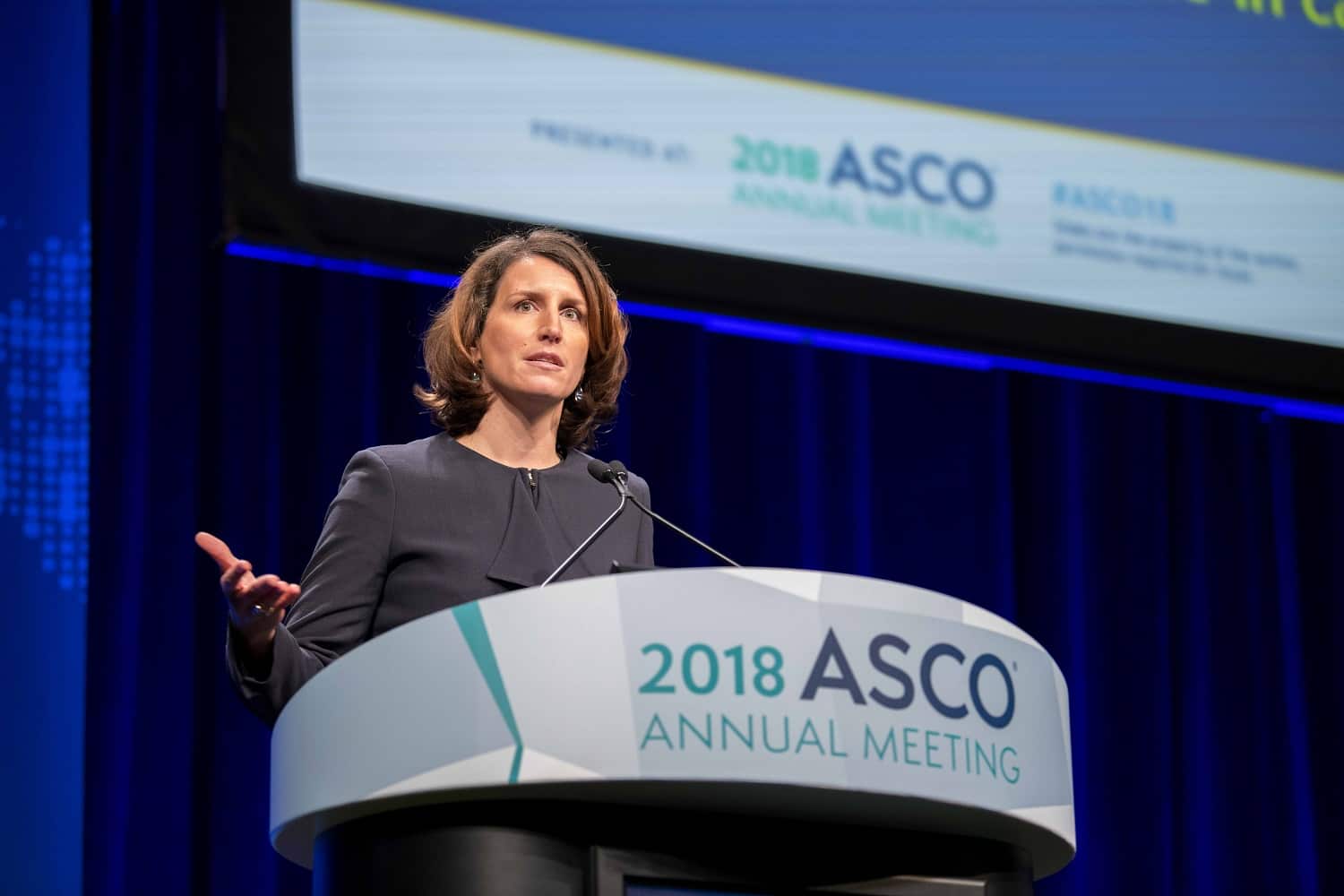
The first focused on combining PD-1 checkpoint immunotherapy with pegilodecakin, a form of the immune-modulating interleukin-10 cytokine, also known as AM0010. Among 34 patients, 14 responded, representing an objective response rate of 41%. The median progression-free survival was just over a year at 12.5 months and the one-year overall survival rate was 89%. The combination treatment was also associated with the clonal expansion of T cells in the blood of these patients, thus indicating a potentially useful biomarker of response.
The second involved CXCR4 inhibition via X4P-001 in combination with axinitib, a tyrosine kinase inhibitor commonly used to treat advanced kidney cancer. The CXCR4 receptor promotes tumor blood vessel growth as well as the recruitment of myeloid-derived suppressor cells (MDSCs) and regulatory T cells (Tregs) that can suppress anti-cancer immune responses, and the elevated expression of CXCR4 that is often found in RCC tumors is associated with poor patient outcomes. By blocking CXCR4 and tyrosine kinase activity, the combination treatment led to one complete response and ten partial responses in 47 patients in addition to 27 that had stable disease, which translates into a 70% disease control rate. Albiges ended by questioning if this was the right combination to move forward into larger clinical trials, and wondered if perhaps a combination involving CXCR4 and PD-1 blockade might prove more effective.
Brian Shuch, MD, of the Yale School of Medicine, then followed Albiges with a discussion of two more poster presentations, each of which focused on potentially useful biomarkers in advanced RCC patients who were treated with PD-1 immunotherapy.
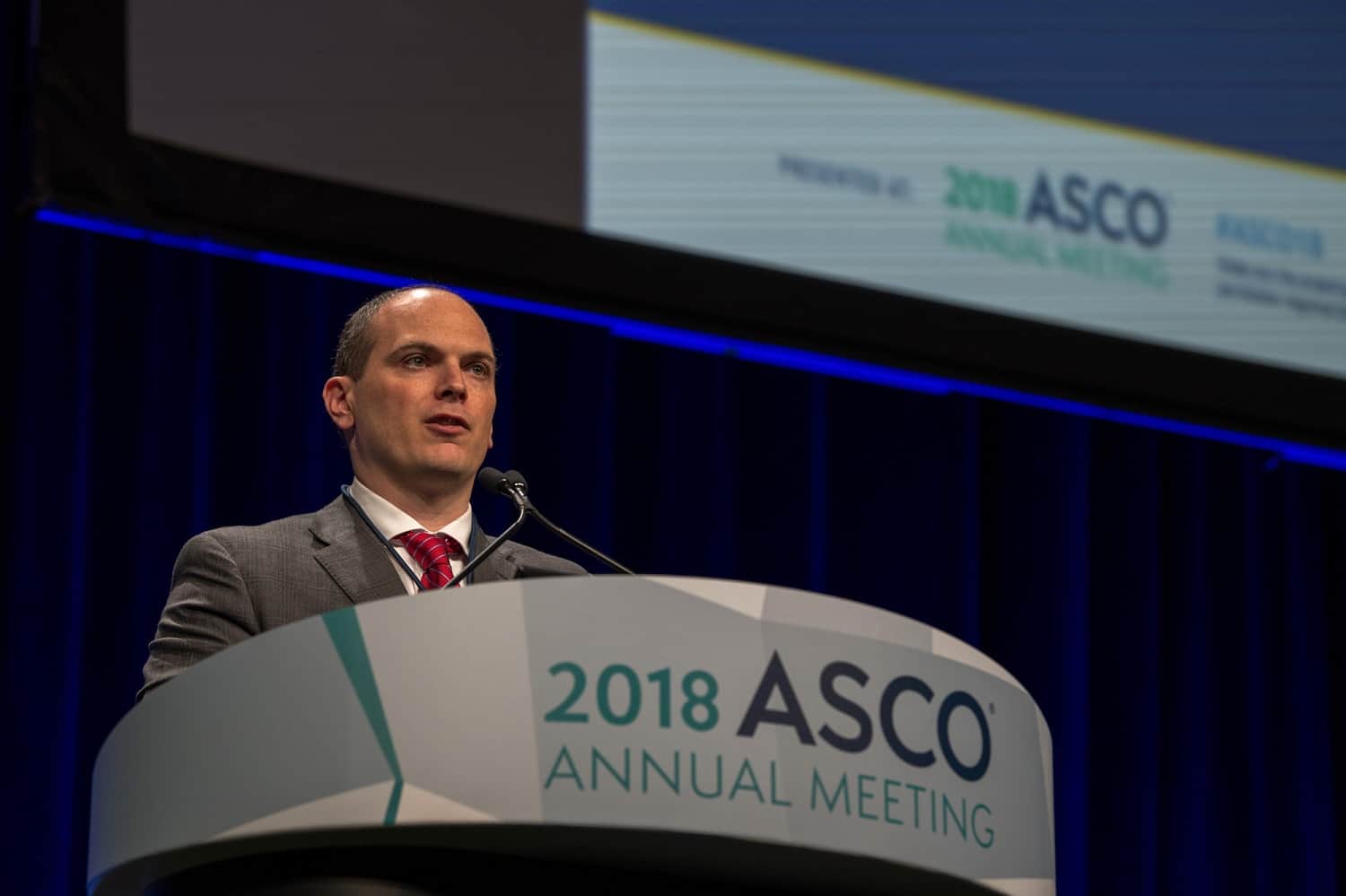
One showed that while “killer” T cells were among the most abundant tumor-infiltrating immune cells after treatment, only infiltration of M2 macrophages was associated with durable clinical benefit from immunotherapy. The study also found that, whereas the number of tumor mutations was relatively low and was not associated with improved outcomes, the presence of certain types of mutations—known as indels—that involve insertion or deletion of DNA segments did have a positive, significant impact on overall survival in patients.
The other provided further evidence of the impact of the gut microbiome—the bacteria that live within each person’s digestive system—on immunotherapy’s effectiveness. In addition to a prospective analysis of specific gut “fingerprints” that was able to predict which patients would benefit from PD-1 checkpoint immunotherapy, it was shown that transplanting either Akkermansia muciniphila or Bacteroides salyersiae—which were more abundant in human patients who responded—into mice improved responses by 43%. This led Shuch to suggest the potential benefits of profiling, or even modulating, the microbiome in more patients prior the immunotherapy, and to ask if regulating antibiotics and/or diet for patients undergoing treatment would be beneficial.
Another focus during Day 2 was immunotherapy strategies for patients with advanced HPV-associated cancers such as head and neck cancer and cervical cancer.
One approach led and discussed by Christian Hinrichs, MD, of the National Cancer Institute (NCI) involved using patients’ existing T cells against their metastatic tumors. After identifying and isolating the T cells within patients that recognized the HPV-specific antigens, Hinrich’s team expanded them and re-infused them back into patients following treatment with chemotherapy and aldesleukin (recombinant interleukin-2). Of eighteen patients with metastatic cervical cancer who were treated, five patients responded. Two had complete responses, which remain ongoing at more than 53 months (4.4 years) and 67 months (5.5 years) since their infusion. In the non-cervical cancer cohort that consisted of eleven patients, two experienced responses, one patient with anal squamous cell carcinoma (SCC) and another with SCC of the head and neck. Hinrich concluded by sharing his team’s finding that post-treatment engraftment of T cells that can target HPV oncoproteins correlated with positive patient responses.
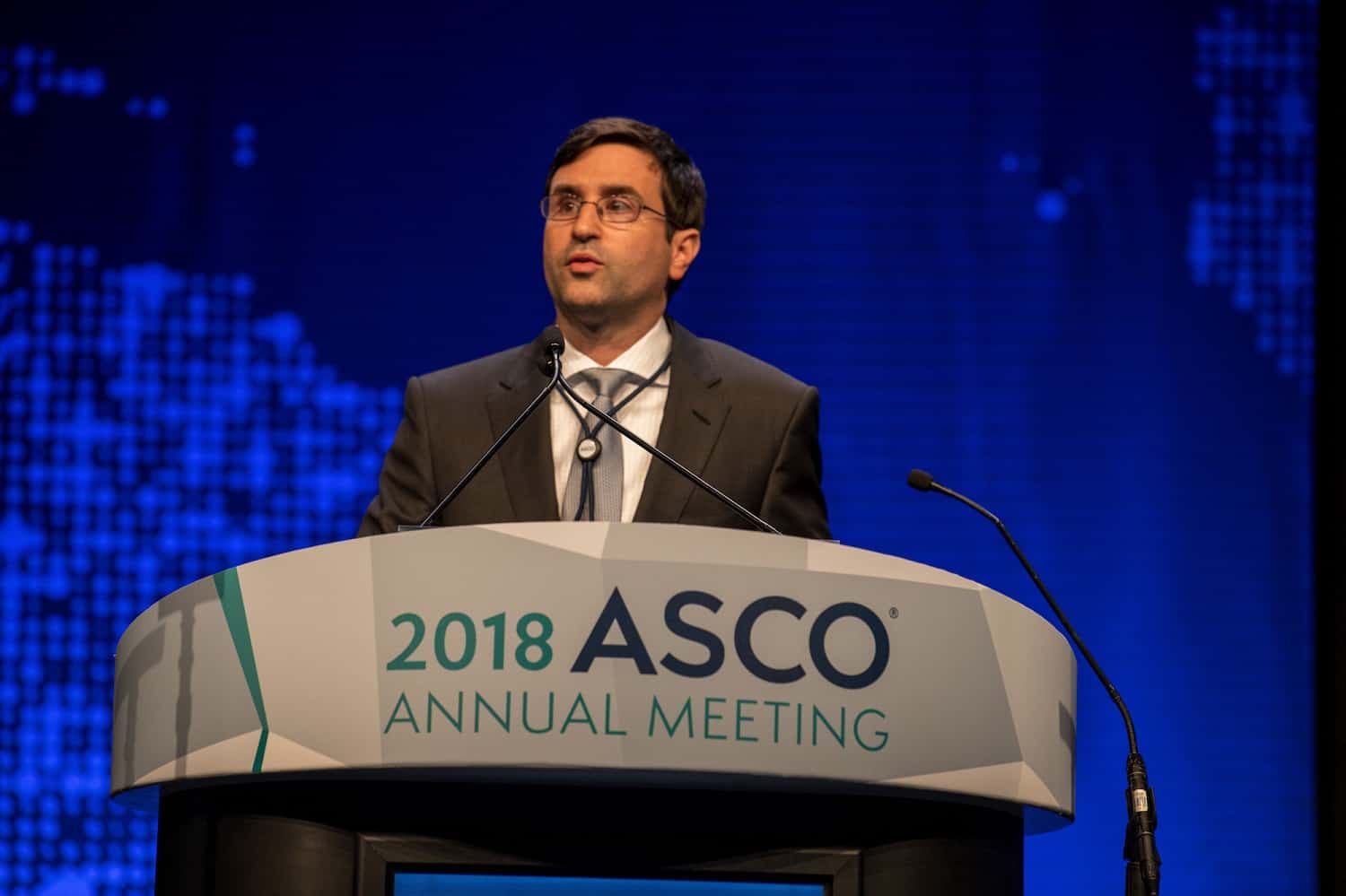
James Gulley, MD, PhD, of the National Cancer Institute, also led and gave a talk on treating HPV-associated cancers with immunotherapy. Gulley’s approach involved M7824, a bifunctional fusion protein that simultaneously targets two immunosuppressive pathways: the PD-L1 immune checkpoint and the TGF-b receptor. Of seventeen patients with HPV-associated cancers, six (35%) responded, including two whose tumors were completely eliminated, while five of the twelve (41% of) patients with known HPV-positive tumors responded, one completely. The disease control rates were 59% and 50%, respectively, for the HPV-associated and HPV-positive patient cohorts. Importantly, Gulley noted that immune activity was seen across cervical, anal, and head and neck cancer types, and that all responses were durable and ongoing as of May 2018.
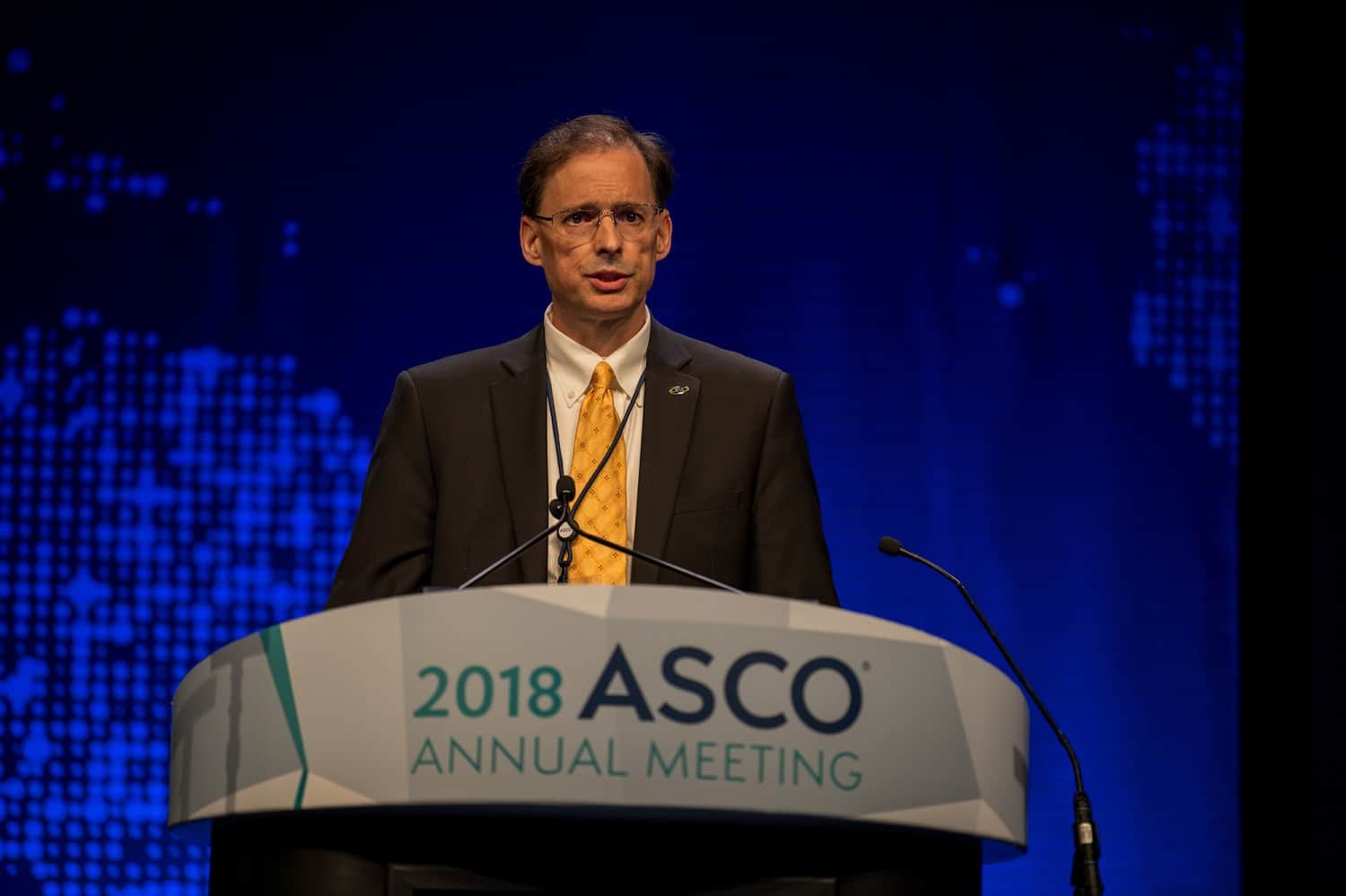
Breast cancer, especially triple-negative breast cancer (TNBC), is another tumor type that is hard to treat and hasn’t proven very vulnerable to single agent checkpoint immunotherapy, and effective combination strategies are desperately needed for this patient population. To that end, Kari Wisinski, MD, of the University of Wisconsin Carbone Cancer Center, discussed a poster presentation on the combination of pembrolizumab with radiation in heavily pre-treated metastatic TNBC patients. Wisinski explained how this approach involves an important immunological response known as the abscopal effect, whereby irradiation of one tumor stimulates immune activity against other metastatic lesions elsewhere in the body. Of seventeen patients, three (18%) had partial responses.
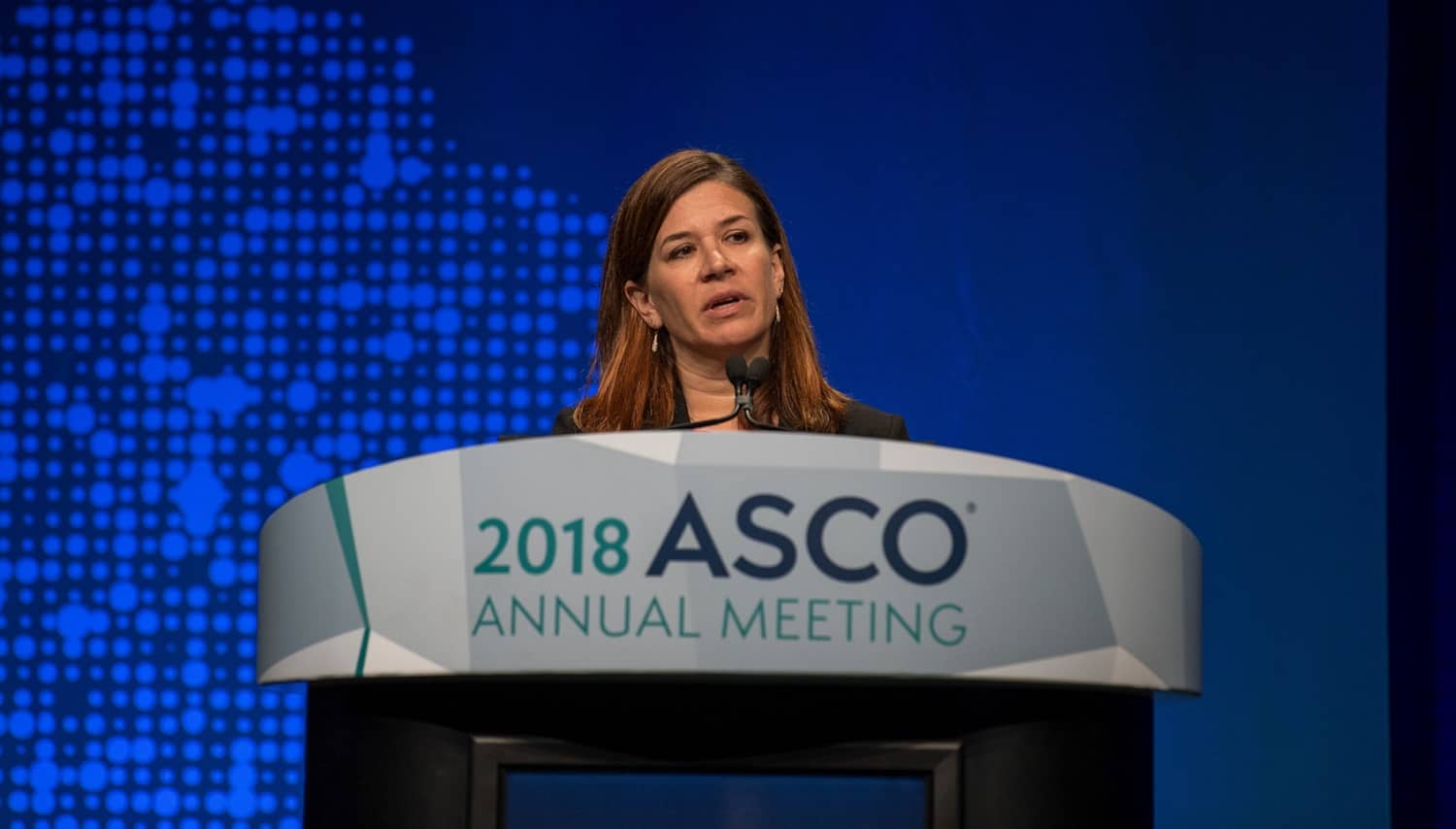
While this response rate may not seem significant, it did appear to be an improvement when compared to other trials that evaluated PD-1 immunotherapy in heavily pre-treated TNBC patients, in which response rates between 5-10% were observed, according to Wisinski. Even more impressive, however, was that the metastatic lesions were entirely eliminated in each of the three patients who had partial responses. This is important because the vast majority of cancer-related deaths are due to secondary, metastatic tumors. Two of these responses lasted more than half a year—30 weeks and 33 weeks—while the last response remains ongoing at almost one year (49 weeks).
Another immunotherapy strategy being evaluated in TNBC, in addition to other cancers, was highlighted by Timothy Yap, PhD, M.B.B.S., of the University of Texas MD Anderson Cancer Center. In the study conducted by Yap, which was led by Memorial Sloan Kettering’s Margaret Callahan, MD, PhD, a former CRI postdoctoral fellow, combined nivolumab with the ICOS agonist JTX-2011. While response rates with this combination weren’t as high as some of the others mentioned, it did produce several responses in patients with advanced gastric cancer, non-small cell lung cancer, and TNBC. Furthermore, Callahan and Yap’s team found that tumor reduction coincided with the emergence of ICOS+ CD4+ T cell populations, and thus may have identified a potential biomarker of response.
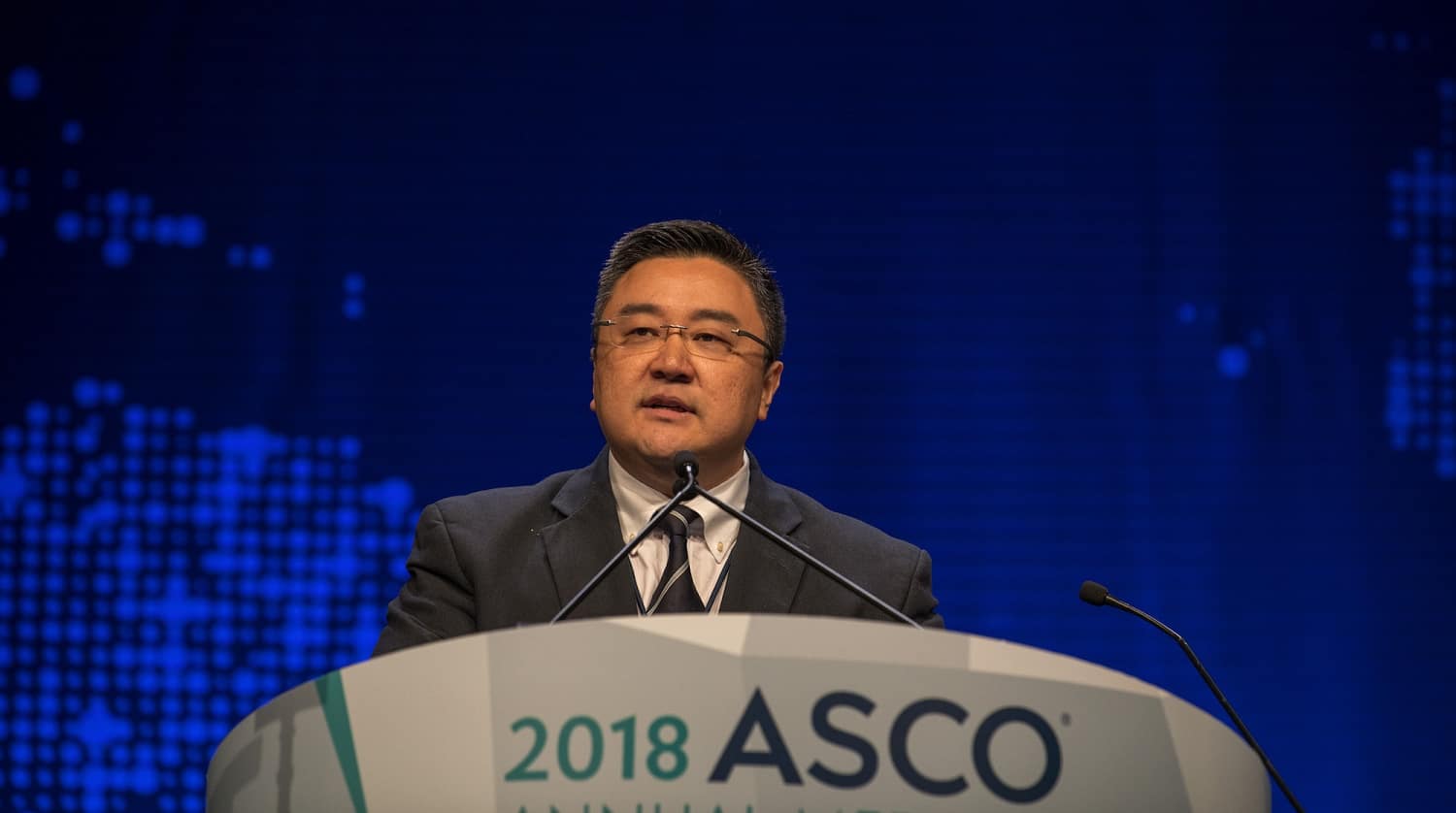
A trial investigating the value of targeting another important immune-related pathway—CD47—was presented by Branimir I. Sikic, MD, of the Stanford University School of Medicine. CD47 acts as a “don’t eat me!” signal that protects normal cells from macrophage-mediated cell eating, or phagocytosis. Cancer cells, however, can use this trick to protect themselves as well. By blocking the CD47 receptor, researchers hoped that it would promote destruction of tumor cells by macrophages. Of the eight patients with ovarian or fallopian tube cancer who received the CD47-targeting Hu5F9-G4, two had partial responses, which was especially promising given that each patient had been treated with more than six lines of prior therapy. A trial of the combination of Hu5F9-G4 and rituximab in rituximab-refractory non-Hodgkin lymphoma has shown promise, including multiple complete responses, and will be discussed more in depth later on during ASCO18. Additionally, a trial combining Hu5F9-G4 and PD-1 immunotherapy is being planned.
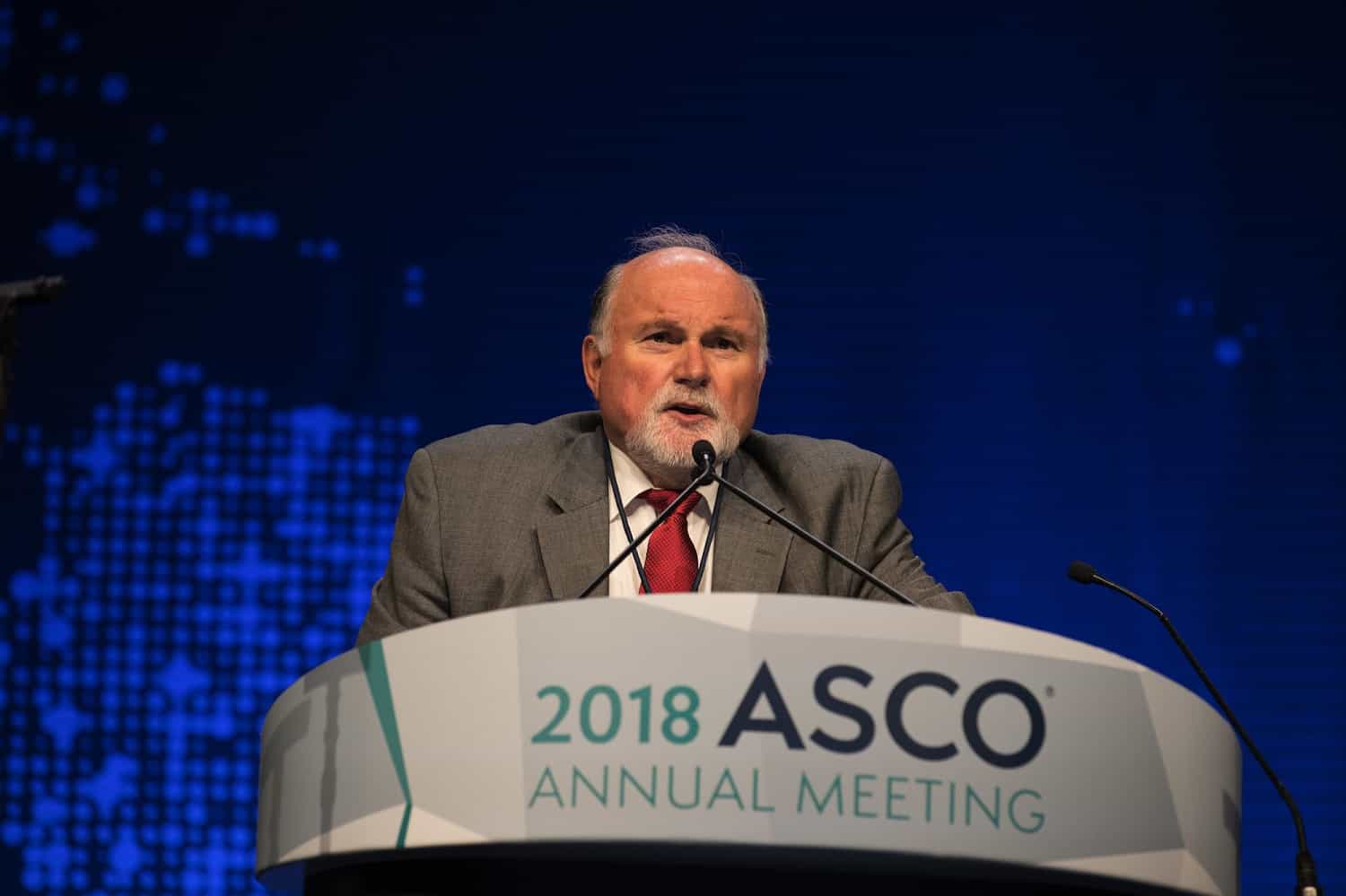
Adi Diab, MD, of the University of Texas MD Anderson Cancer Center, showcased the promising activity of NKTR-214, which is designed to provide sustained signaling through the interleukin-2 pathway, in combination with PD-1 immunotherapy. As a first-line treatment in patients with metastatic melanoma, the combination led to a 50% objective response rate and a 71% disease control rate. Even patients with PD-L1-negative tumors benefited, with 42% responding. Several patients experienced complete responses, including one in a patient with a PD-L1-negative tumor. The combination was also beneficial as a first-line treatment in patients with kidney cancer (RCC). Among 26 patients, twelve responded and an additional eight saw their disease stabilized. There were also several complete responses in this patient population. Among the biomarkers associated with positive responses were an increase in T cell and natural killer cell proliferation in the blood, and an increase in killer T cells in tumors. Tumors that were initially PD-L1-negative but then increased PD-L1 expression within three weeks of treatment were also associated with positive responses.
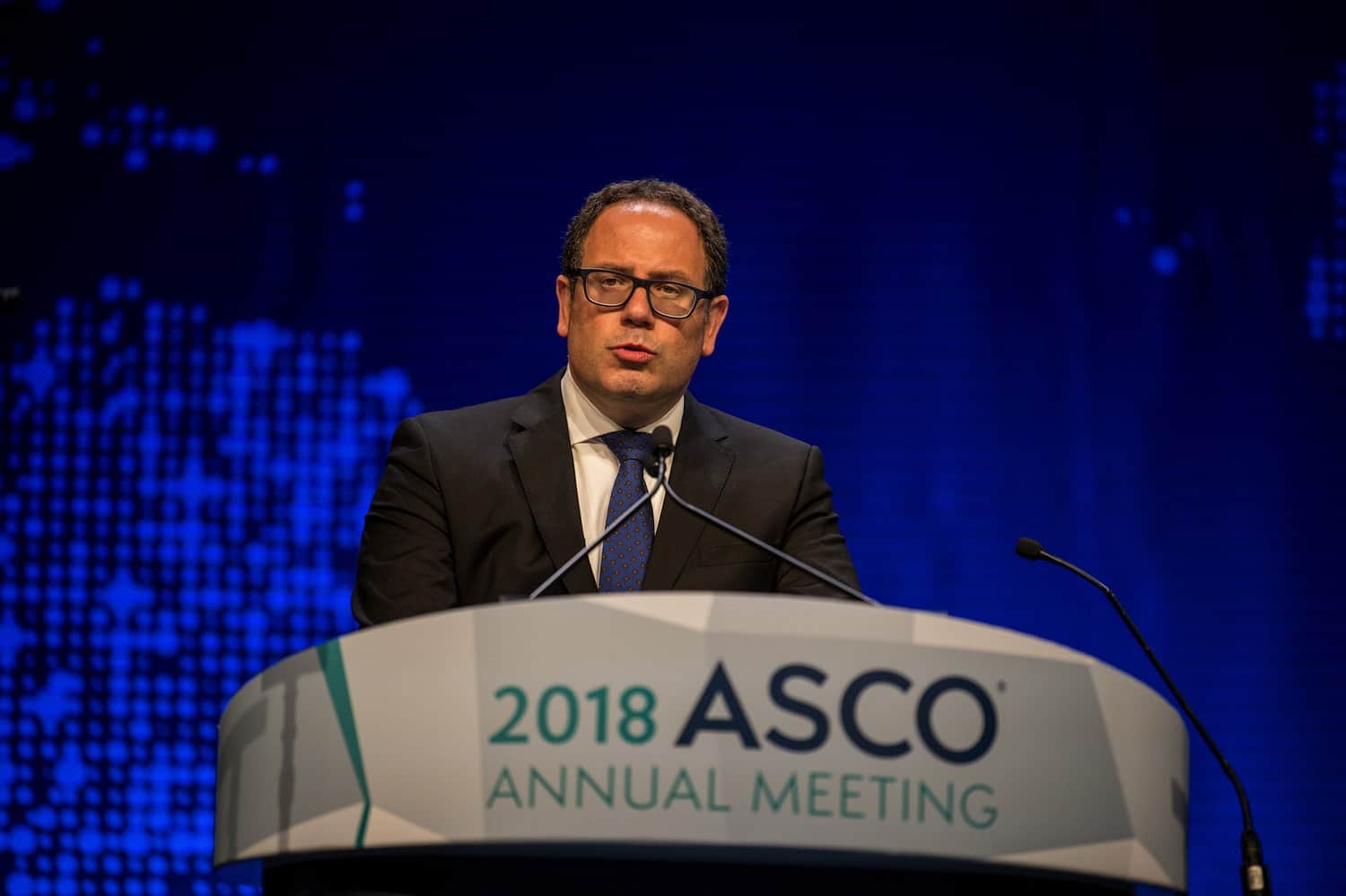
In sarcoma, another hard-to-treat tumor type, the benefits of an oncolytic virus combination as well as a cell-based immunotherapy were presented. The first study, which was led by Sandra D’Angelo, MD, of Memorial Sloan Kettering, revealed the benefits of combining PD-1 immunotherapy with the oncolytic virus T-VEC in patients with metastatic sarcoma, which produced responses in 35% of patients. Secondly, a pilot study involved creating TCR-engineered T cells to target the cancer-associated NY-ESO-1 antigen in patients with liposarcoma. While it has been only six months since the first patient was treated, of the eight so far who have received an infusion of these customized T cells, four have responded, and an additional three had stable disease. The final patient has not yet been assessed.
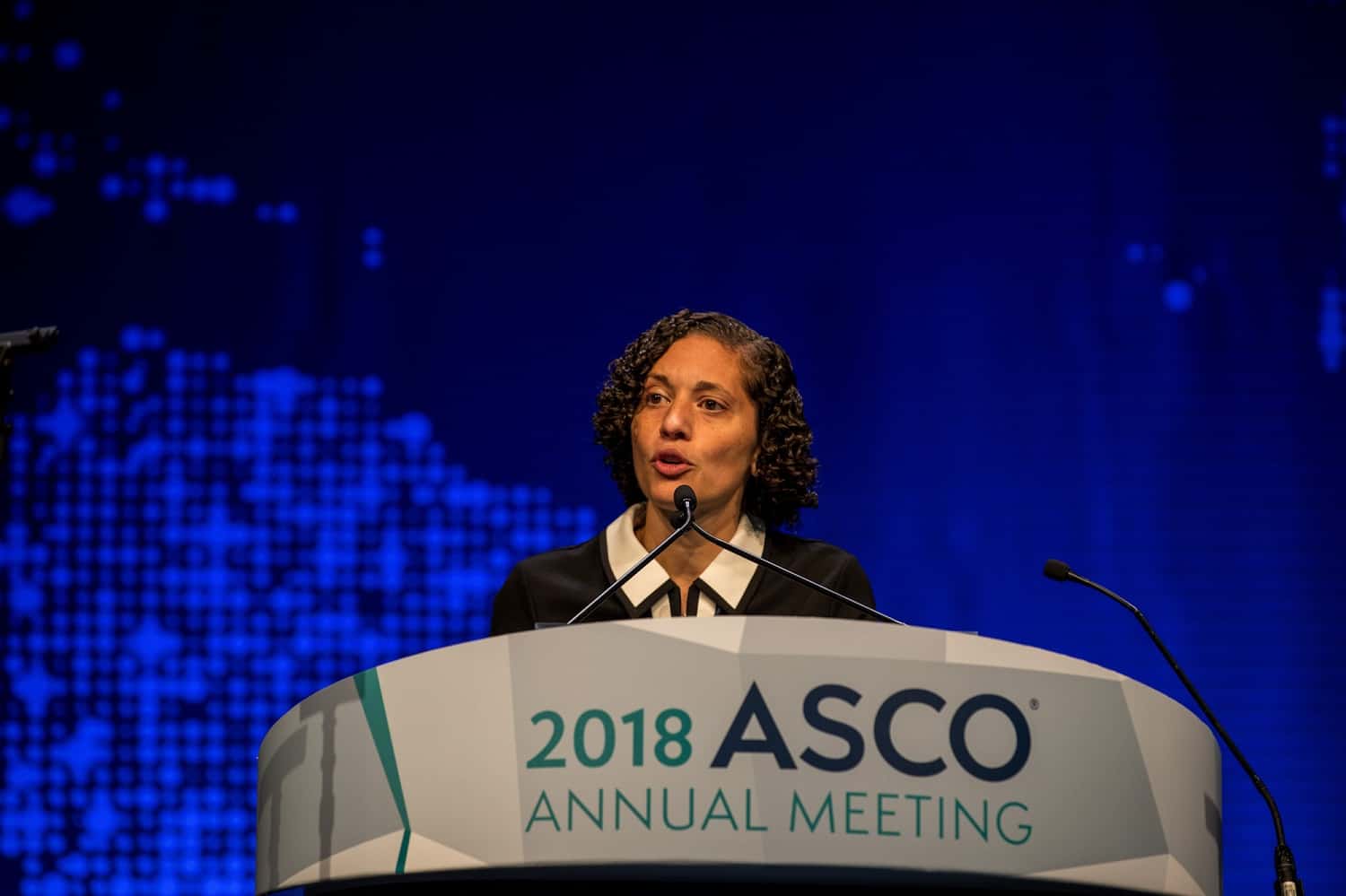
Finally, an update on axi-cel, the CD19-targeting CAR T cell immunotherapy, in non-Hodgkin lymphoma was presented by Moffitt Cancer Center’s Frederick Locke, MD In the phase 2 ZUMA-1 clinical trial, the objective response rate was 82%, with 58% of patients having a complete response, and the median overall survival has not yet been reached. Interestingly, Locke’s team found that these responses can deepen over time. He showed that 41% of the patients who had partial responses eventually became complete responders, and that the survival curves of partial responders and complete responders seemed to merge at the three-month mark, with both groups having similar progression-free survival rates after that point. Additionally, patients who remained responsive at the three-month mark had an 80% likelihood of maintaining that response at the one-year mark.
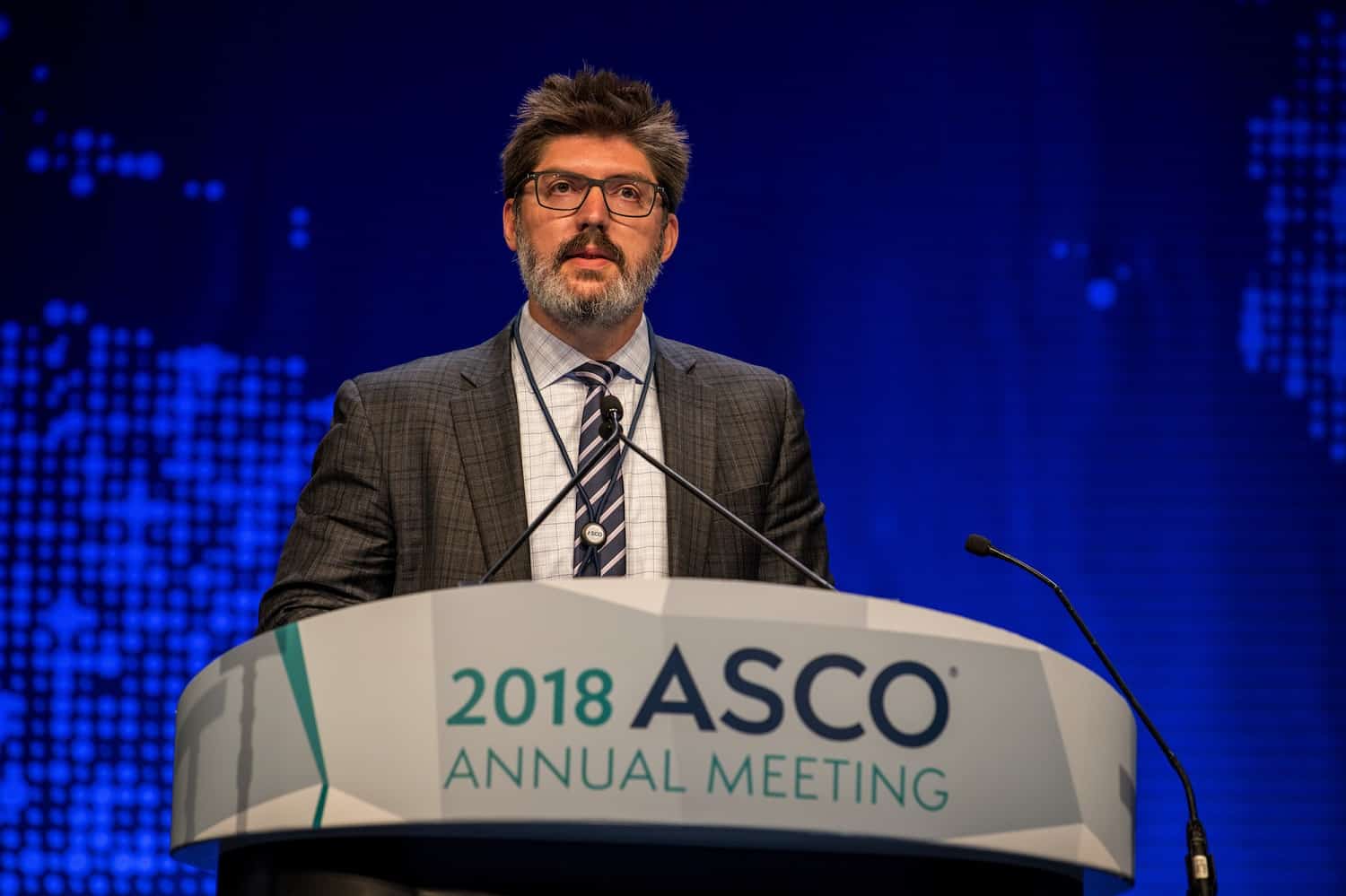
Day 3 of ASCO18 will feature more important updates on cancer immunotherapy, so be sure to check our blog tomorrow to read our recap!
